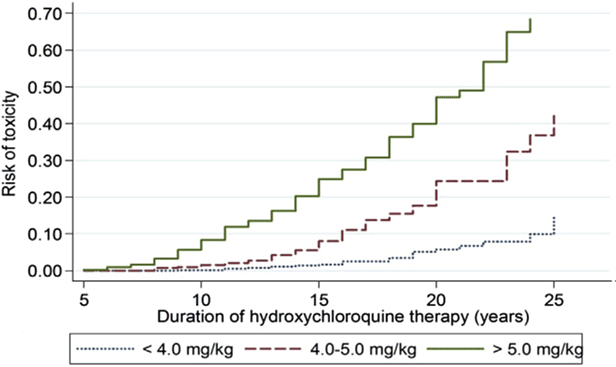The Fraser Eye Care Center Doctors have either authored or reviewed and approved this content.
Chloroquine and Hydroxychloroquine (Plaquenil) have been used for many years, initially for the treatment of malaria but now more commonly for the treatment of inflammatory diseases such as rheumatoid arthritis and Systemic Lupus Erythematosis. Lately though its use has broadened to also include other diseases such as Diabetes, heart disease and adjunct cancer therapies.
Plaquenil is an extremely safe medication but retinal and corneal side effects are possible. Unfortunately, the retinal side effects are largely irreversible and can lead to vision loss. So, it is critical to detect early retinal toxicity in the hopes of limiting the extent of visual loss.
Plaquenil side effects start off by effecting the surface of the eye (the cornea) leading to verticillata. Verticillata are deposits of salts within the corneal epithelium. This does not cause any symptoms to the patient and is reversible when the medication is stopped. In addition, verticillate findings bare no correlation with retinal toxicity and is not an indication to stop the medication.
The more serious side effect is the retinal toxicity possibility. Initially early retinal findings are often asymptomatic despite some subtle blind spots. Later patients can develop a bilateral “bull’s eye maculopathy,” which is where a ring of retinal base (retinal pigment epithelium) is effected and lost. Leading to loss of central vision, peripheral vision, and even night vision.
Patients presenting with retinal toxicity can still noticed deterioration in visual function even after discontinuing hydroxychloroquine, possibly due to slow clearance from the retina and the rest of the body. As such early detection is very important.
Plaquenil toxicity is poorly understood. It is believed the medication molecules bind to the pigment (melanin) at the base of the retinal (retinal pigment epithelium) causing metabolic changes and toxic effects.
Although Plaquenil retinal toxicity has always been thought to be rare, recent studies suggest it may have a higher than previously assumed but still uncommon. The risk is lower for patients on lower Plaquenil dosage and lower cumulative totals.

Risk factors to consider:
The American Academy of Ophthalmology (AAO) recommends a complete examination be performed as a baseline within the first year of usage with ancillary testing such as visual fields and optical coherence tomography. Subsequent to that it is recommended that minimum one is seen 5 years after for follow-up, with that being said most Ophthalmologists and Rheumatologists recommend yearly follow-ups.
The Fraser Eye Care Center Doctors have either authored or reviewed and approved this content.